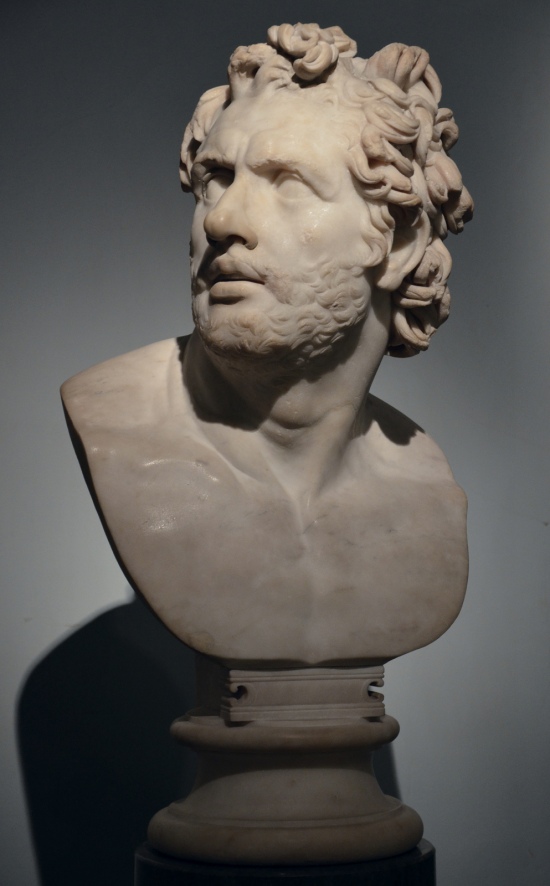This week’s sculpture from Hadrian’s Villa is a marble head of a companion of Odysseus, copied after a famous work from the Hellenistic period.
This head shows the face of a man that probably belonged to a multi-figure group depicting Odysseus with his twelve companions blinding the one-eyed giant (and the most famous of the Cyclopes), Polyphemus, with a burning stake.
The depiction of the blinding of Polyphemus occurs a number of times in classical sculpture and especially in the decoration of grottoes and nymphaeums. Another version of this head was found, together with the body, at the Villa/Grotto of Tiberius in Sperlonga, south of Rome. There, it belonged to a figure portraying a wineskin-carrier, in a statue-group showing the blinding of Polyphemus by Odysseus and his companions. (See more images here.) Apart from the statue in the grotto at Sperlonga, other famous examples were found in the sunken nymphaeum of Punta Epitaffio at Baia, near Naples, and in the Antrum Cyclopis (“cave of the Cyclops”) of the Domus Aurea in Rome.
The sculpture was found in an area of Hadrian’s Villa known as the Pantanello (or “little swamp”). The discoveries at the Pantanello were considerable. Many sculptures and architectural fragments that are now in major international collections were found including a colossal head of Hercules and two busts of Hadrian.
This head has suffered some damage: the nose, lips and bust are modern restorations. It is on display at the British Museum in London.
Source: British Museum


